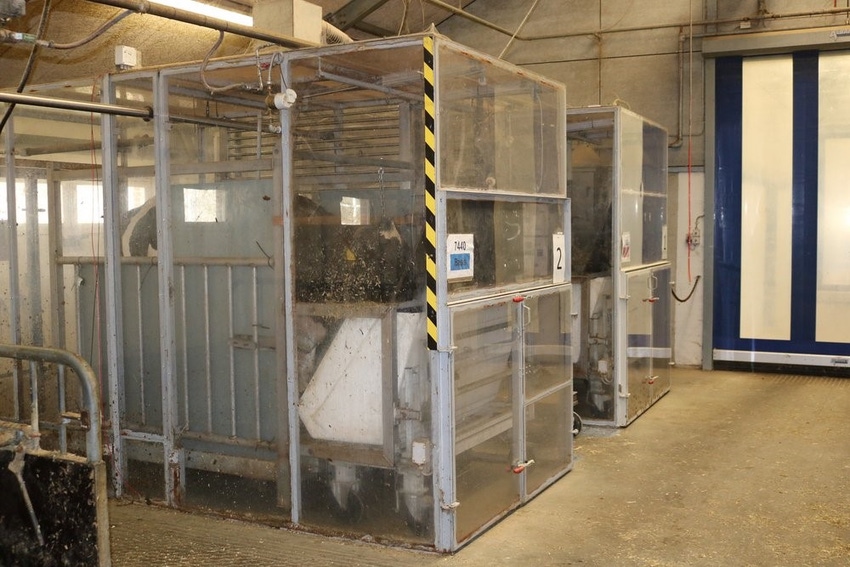Forage amount influences cow methane production
Feeding strategy not applicable in practice because it challenges cow health.
February 13, 2020

A feeding trial at Aarhus University Foulum in Denmark has shown that cows’ enteric methane emissions decrease markedly when the amount of roughage in the feed ration is limited significantly. However, this feeding strategy is not applicable in practice, because it challenges the cows’ health as well as farm economics.
Based on a 2018 drought in Europe, a previous project at Aarhus Foulum studied the possibility of feeding dairy cows with less or no roughage at all. The results showed that the cows performed reasonably without roughage, but analyses of the rumen content also showed that rumen metabolism, and, thus, animal health, was challenged.
The amount of roughage did not affect milk yield; however, the fat percentage in the milk decreased significantly when roughage was not used, thus lowering the energy-corrected milk yield, Aarhus said.
Based on these results, Aarhus researchers carried on working with the same feed rations in order to study how such rations affect the cows’ methane production.
The study compared three feed rations: (1) basis -- 50% dry matter from roughage, meaning a “normal” ration; (2) 25% roughage -- 25% dry matter from roughage plus 5% dry matter from straw, with the rest being concentrate, and (3) zero roughage -- 0% dry matter from roughage plus 10% dry matter from straw, with the rest being concentrate.
The concentrate was sourced from non-genetically modified organism ingredients grown in northwestern Europe, Aarhus noted.
Each ration was studied in four Holstein and four Jersey dairy cows.
During the project, the cows' enteric methane production was measured in respiration chambers at Aarhus Foulum. Furthermore, the cows were weighed, rumen and fecal samples were taken and feed and water consumption and rumination were registered.
According to the announcement, the results showed a very large reduction in methane emissions when reducing the amount of roughage from 50% to 0%. This was especially the case for the Holstein cows, for which methane per kilogram of dry matter intake was reduced 48%, while the reduction for the Jersey cows was 23%, meaning a significant interaction between breed and the amount of roughage, Aarhus reported.
The reduction of methane may be explained by the fact that when roughage is removed from the cows’ feed ration, there will be a reduction in the amount of fermentable fiber, since the fermentation of fiber causes the production of methane.
“Our results are absolutely interesting new knowledge in relation to reducing the cows’ production of greenhouse gases. However, it is not obvious to make such an extreme feeding in practice. Firstly, we will not utilize the cow’s potential to live from what other species cannot live from, roughage. Secondly, there is a risk of digestive disorders in the cow, and, last but not least, the feeding with high amounts of concentrate is rather expensive,” said senior advisor Christian F. Børsting from Aarhus department of animal science who is in charge of the study.
At present, the researchers do not have a firm explanation for the large difference between the Jersey and Holstein cows.
The study is part of the project “Reduced Carbon Footprint at Cow & Farm Level,” which aims to contribute to more sustainable dairy production with a reduced carbon footprint at the product, cow, farm and national levels. The project runs from 2019 to 2022.
You May Also Like



